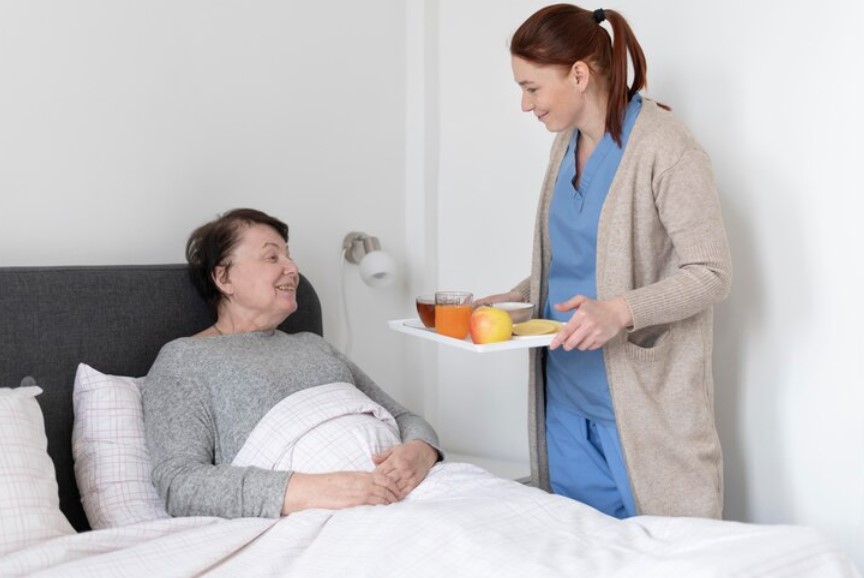27
Oct 2025
The Role of Hospitality Services in Patient Recovery
Published in General on October 27, 2025

Hospital care rightly focuses on diagnosis, treatment and clinical monitoring — but recovery is never only clinical. Hospitality services — the non-medical systems that deliver comfortable accommodation, nutritious meals, clear communication, and a welcoming environment — play a powerful, measurable role in patient outcomes. When hospitals and surrounding communities coordinate to reduce stress, maintain dignity, and enable rest, patients recover faster, families cope better, and the whole care pathway becomes more resilient.
First, comfort matters for physiology. Pain thresholds, sleep quality and immune function are all sensitive to environmental stressors: excessive noise, poor bedding, irregular meal timing, and chaotic schedules increase cortisol and disrupt sleep cycles that are essential for healing. Hospitality teams that prioritise quiet hours, comfortable linen, timely warm meals and ergonomic furniture create conditions that let the body do the work clinicians prescribe. In practical terms, this reduces delirium risk in older patients, decreases reported pain levels, and shortens lengths of stay when combined with good clinical care.
Second, hospitality services reduce cognitive and emotional load. A patient who has clear, compassionate information about visiting hours, where to store belongings, how meal choices work, and who to call for non-medical needs experiences far less anxiety. Trained guest-services staff, wayfinding signage, and simple welcome packs help patients and carers focus on rest and recovery instead of logistics. Families who can get a comfortable place to sleep or a warm meal near the ward are better able to provide emotional support and participate in discharge planning — an important factor in preventing readmissions.
Nutrition and mealtime support are core hospitality contributions. Hospitals and partnered accommodation providers that coordinate therapeutic diets, provide culturally appropriate options, and make mealtimes sociable rather than clinical improve intake — especially in elderly or chronically ill patients who are at risk of malnutrition. Nutrition directly impacts wound healing, medication tolerance and rehabilitation capacity; a menu designed with hospitality input and clinical oversight bridges the gap between what is clinically ideal and what the patient will actually eat.
Hospitality also smooths transitions of care. Discharge is a vulnerable time: patients move from a structured environment to home or temporary accommodation. When hospitality services extend to reliable short-stay lodgings, transport coordination and post-discharge meal plans, patients are less likely to miss follow-up appointments or fail medication regimens. Partnerships with local accommodation providers and patient-support platforms — including patient lodges, serviced apartments and discounted hotel arrangements — can provide practical alternatives for families who must travel for specialist care.
Practical example: in Melbourne, there is a well-established infrastructure connecting patients and families to accommodation close to major hospitals. Organisations and services list hotels, serviced apartments and patient lodges within walking distance of centres like the Royal Melbourne Hospital, The Alfred, Royal Children’s Hospital and St Vincent’s. Many hospitals also publish lists of nearby hotels and apartments that offer discounts or patient-friendly facilities; statewide resources point families to financial assistance schemes and patient-focused booking services that reduce the cost and complexity of staying near care. These options make it feasible for a family member to remain nearby, which in turn supports better recovery and fewer complications.
Safety, dignity and infection prevention are hospitality responsibilities that complement clinical efforts. Cleanliness protocols for guest areas, clear guidance on when visitors should stay away, and coordination on PPE for carers protect vulnerable patients. Hospitality training focused on basic infection-control awareness — especially in patient-facing roles — helps prevent cross-contamination and supports hospital quality metrics.
Finally, hospitality services influence patient satisfaction and long-term trust in the health system. Patient experience scores are correlated with adherence to treatment plans, likelihood to follow up, and willingness to recommend services — outcomes that carry real public-health and financial implications. Investing in hospitality is therefore not a soft, optional expense: it is part of an integrated strategy to improve clinical outcomes, reduce readmissions, and support workforce wellbeing (fewer distressed families, more predictable discharges).
In summary, the non-clinical architecture around care — comfortable lodging, thoughtful meals, clear communication and coordinated local accommodation options — is integral to the healing process. Hospitals that partner with hospitality providers, maintain clear information for patients and families, and treat hospitality as a clinical enabler create conditions where medicine is more effective and recovery is faster. For patients and loved ones travelling for specialist care, practical systems that connect clinical teams with nearby, affordable accommodation (as seen in Melbourne’s hospital networks and booking services) turn logistical burdens into manageable support — and that support matters, clinically and humanely.









